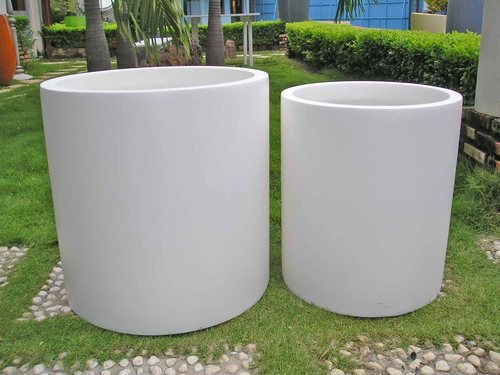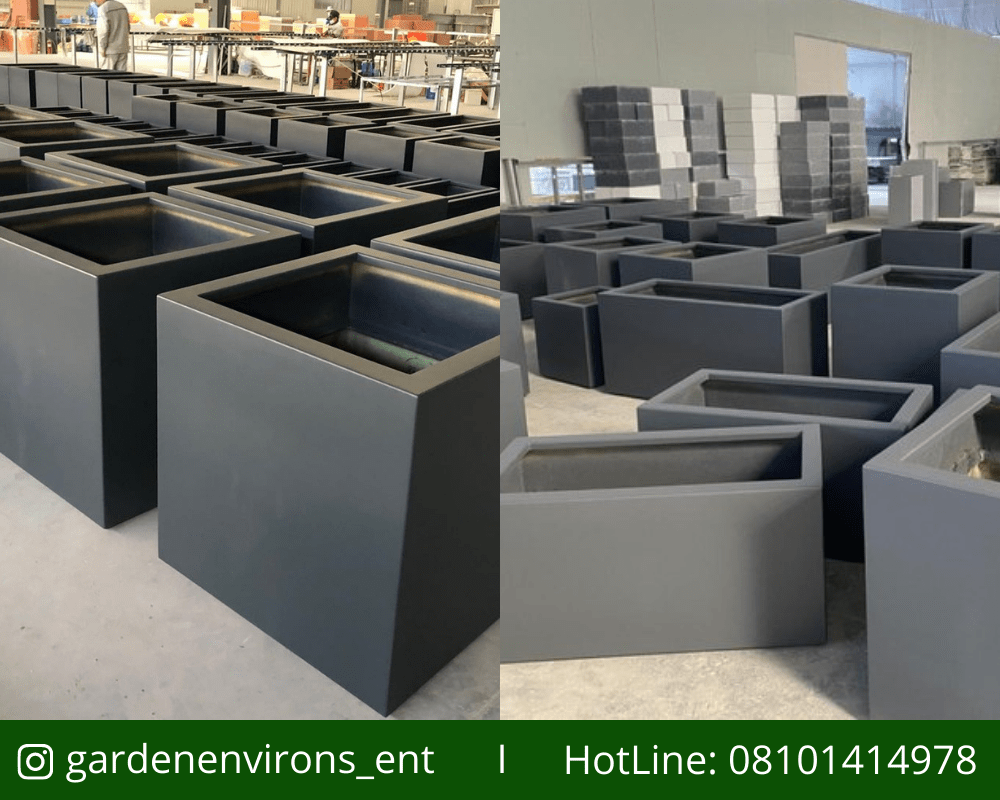Anyone might be persuaded to save money by using cheaper plastic pots. When plastic planters are exposed to sunlight, they decay, and you may end up losing money in the long term. Other planter materials, such as wood, terracotta, and metal, are however prone to water damage and will fade, split, and/or break with time. In general, we think fiberglass planters outperform the other six most popular planter materials.
If you’d like to take a step back and have a better understanding of all the various materials, check out our list of all the benefits and drawbacks of common planter materials!

- Every planter is made using an unique mold that is made to the precise size, shape, and measurements of the finished product.
- The fiberglass sheets are then cut, shaped, and put into and around the mold with extreme care.
- To make the final product, high-quality polyester resin is applied to the mold multiple times (depending on the size and shape of the planter).
- The planter will be transferred to the finishing section once the last layer has hardened, where each product is lovingly polished by hand. The finishing department, just as on a high-end fiberglass boat or automobile, removes any surplus materials and sands the fiberglass surface uniformly for a flawless finish.
This is a time-consuming operation, but it is vital to manufacture the magnificent, long-lasting plant planters that Garden & Environs customers have come to anticipate. Shop our collections of fiberglass Planters

